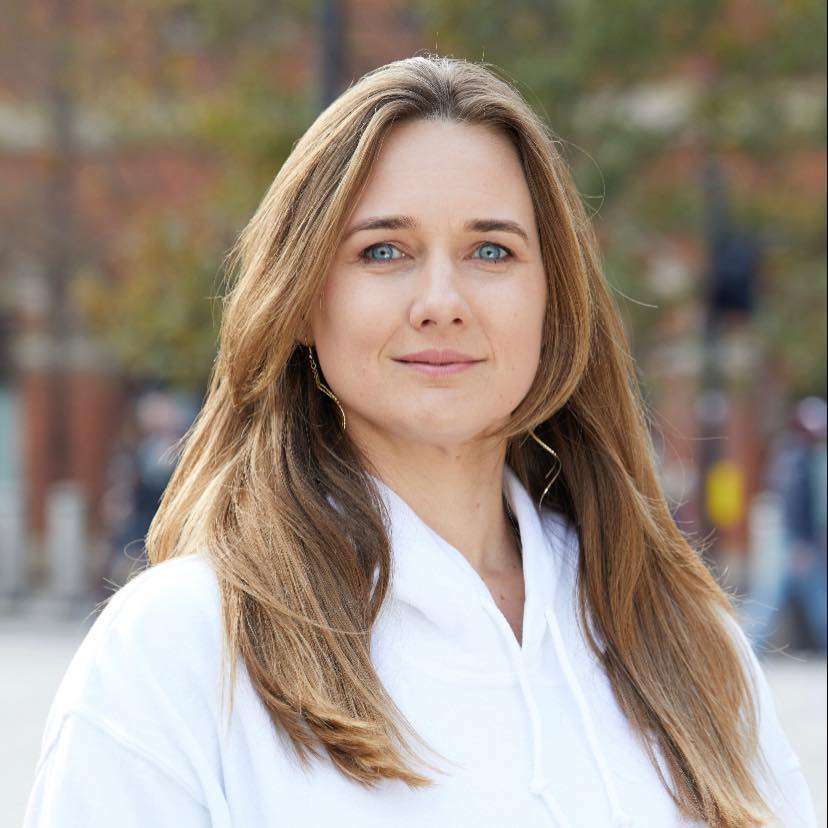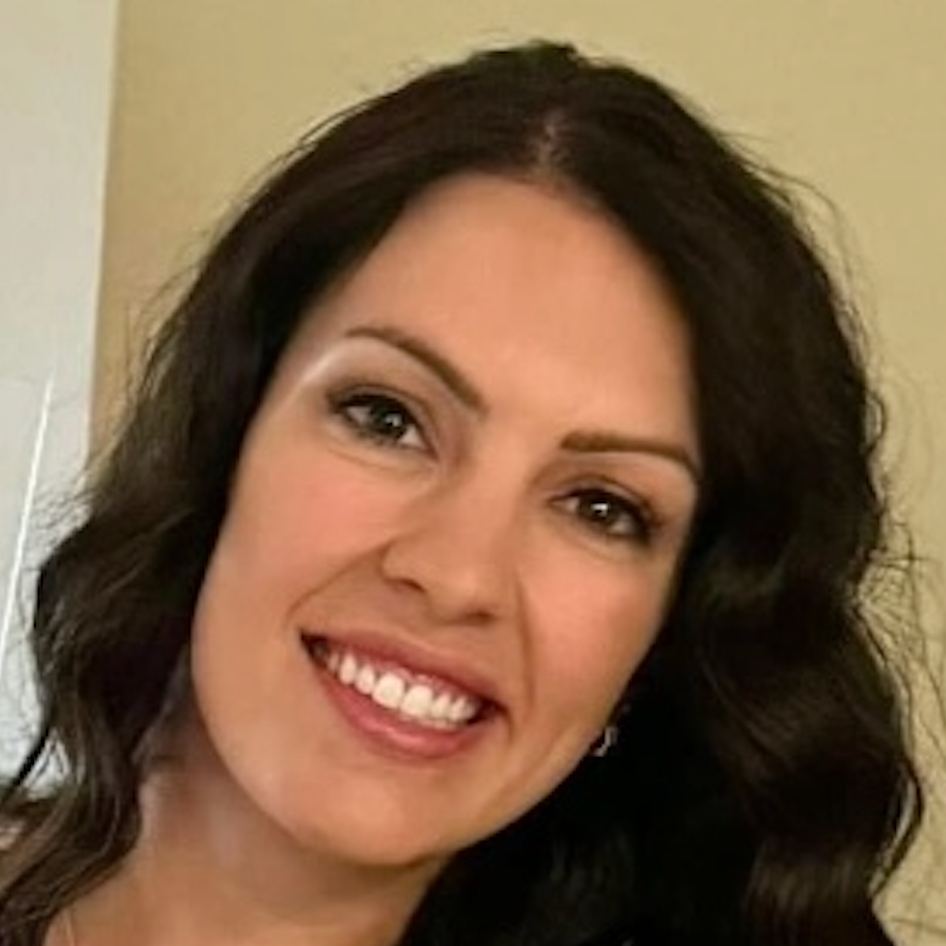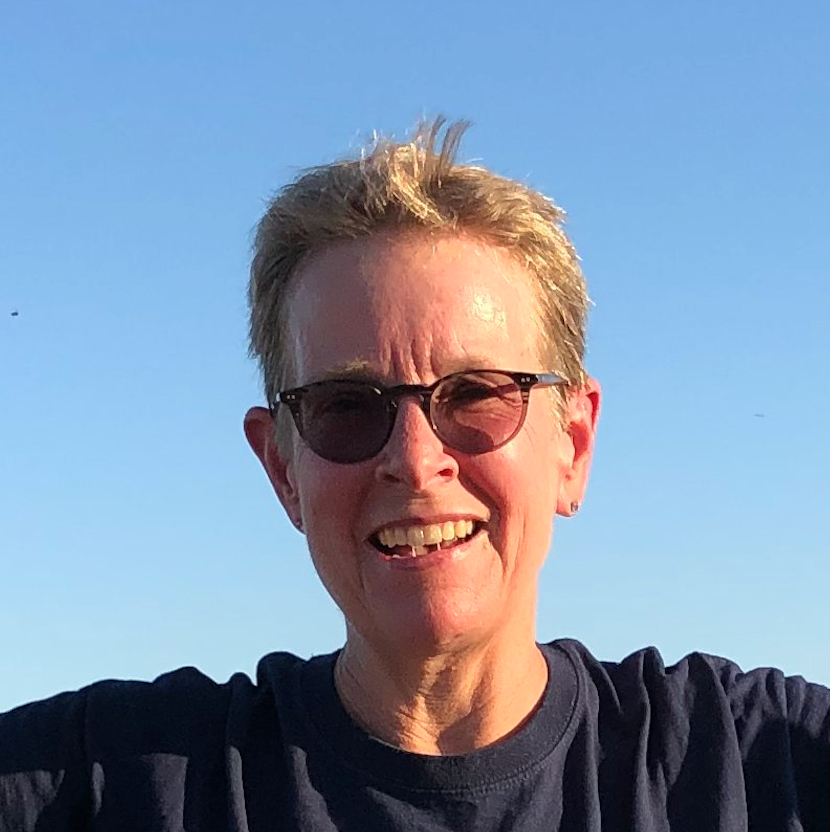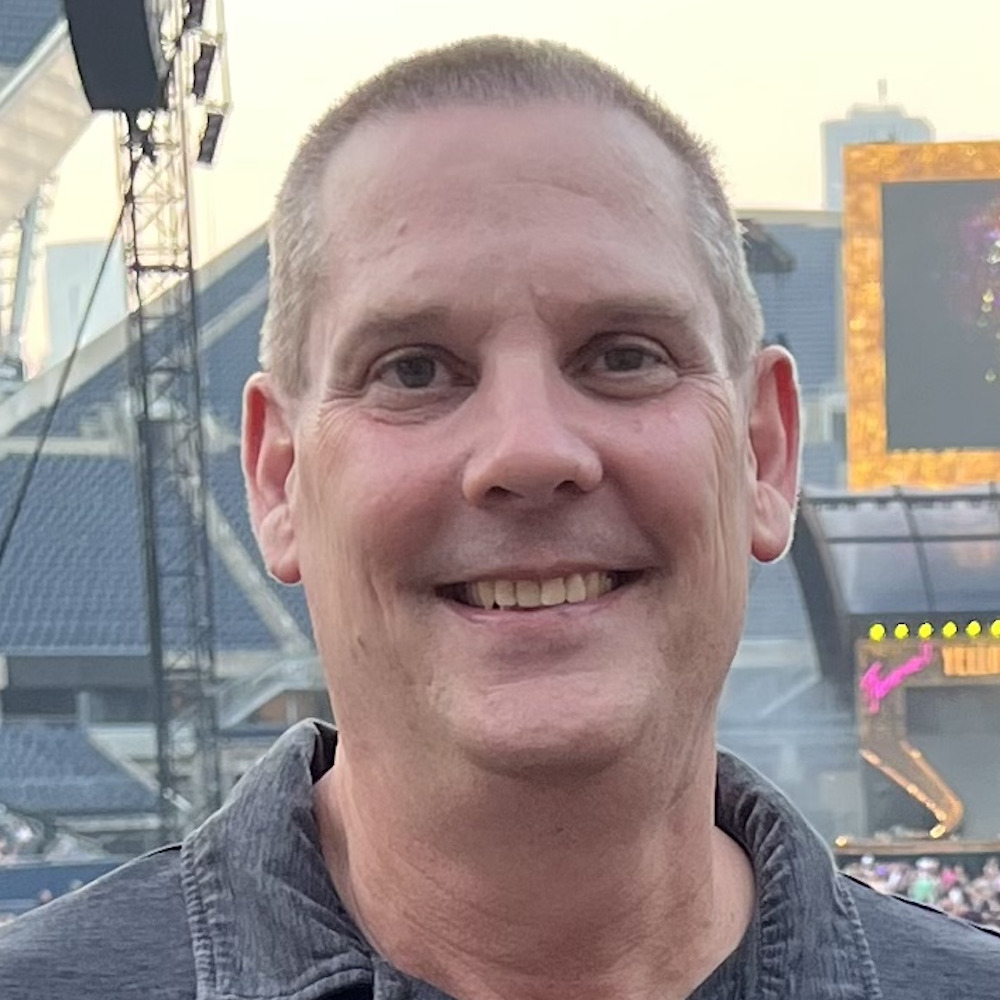Nicky Greenhalgh’s Stage 4 Follicular Lymphoma Story
As a parent of 2 young children, Nicky Greenhalgh assumed her fatigue and weight loss were a symptom of motherhood. Until she noticed about 30 lumps along her neck.
Today, Nicky lives in Australia and oversees the “Living with Follicular Lymphoma” Facebook group which has brought together over 13,000 follicular lymphoma patients and caretakers.
Nicky shares her follicular lymphoma story, her journey through Rituximab and Radioactive Iodine treatments, how pole dancing helped her rebuild muscle after weight loss, and her hope in uniting those like her to find a cure and share support.
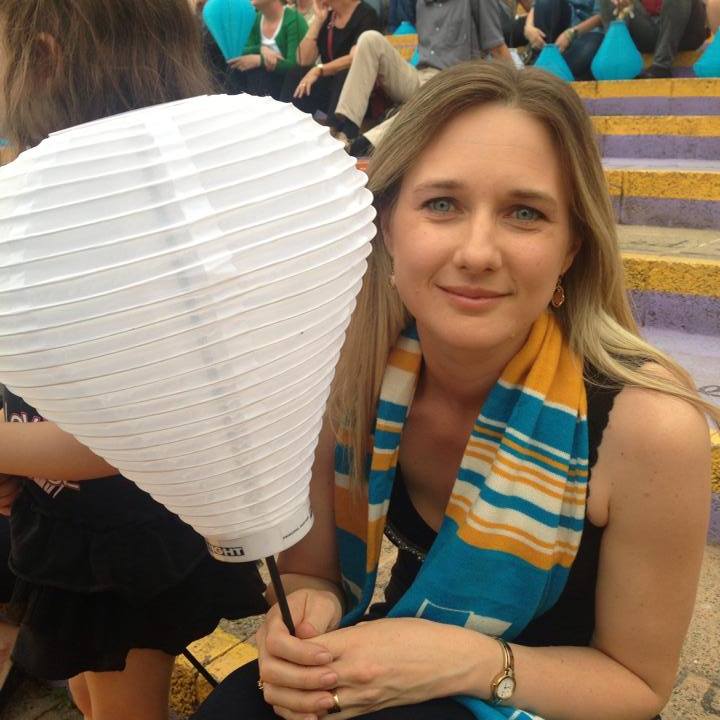
- Name: Nicky G.
- Diagnosis (DX):
- Follicular Lymphoma
- Stage 4
- Follicular Lymphoma
- Age at DX: 31
- Symptoms:
- Fatigue
- Weight loss
- Lumps in the neck and groin
- Treatment:
- Chemotherapy
- Radiation
- Platelet transfusion
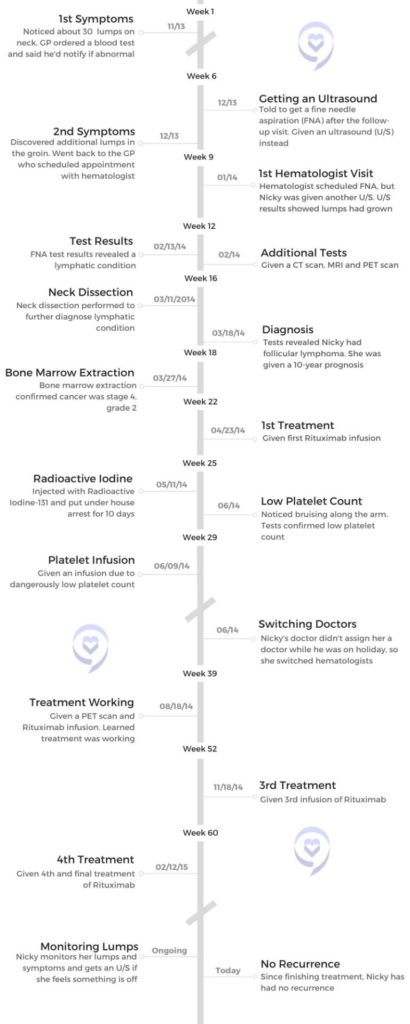
This interview has been edited for clarity. This is not medical advice. Please consult with your healthcare provider for treatment decisions.
- First Symptoms and Diagnosis
- What was life like before your diagnosis?
- How would you summarize your journey with cancer?
- What were your first symptoms?
- Getting an ultrasound
- Discovering more lumps
- Were you concerned about what the diagnosis could be?
- What does a fine needle aspiration feel like?
- Delaying the diagnosis
- Describe receiving your diagnosis
- Processing A Cancer Diagnosis
- Getting Treatment
- Describe your bone marrow extraction
- Beginning treatment
- Taking precautions after radioactive iodine infusion
- How long were you away from your husband and kids after the infusion?
- Describe your radioactive iodine infusion
- Breastfeeding before starting treatment
- Processing an inaccurate prognosis
- Was treatment working for you?
- Navigating Life with Cancer
- Reflections
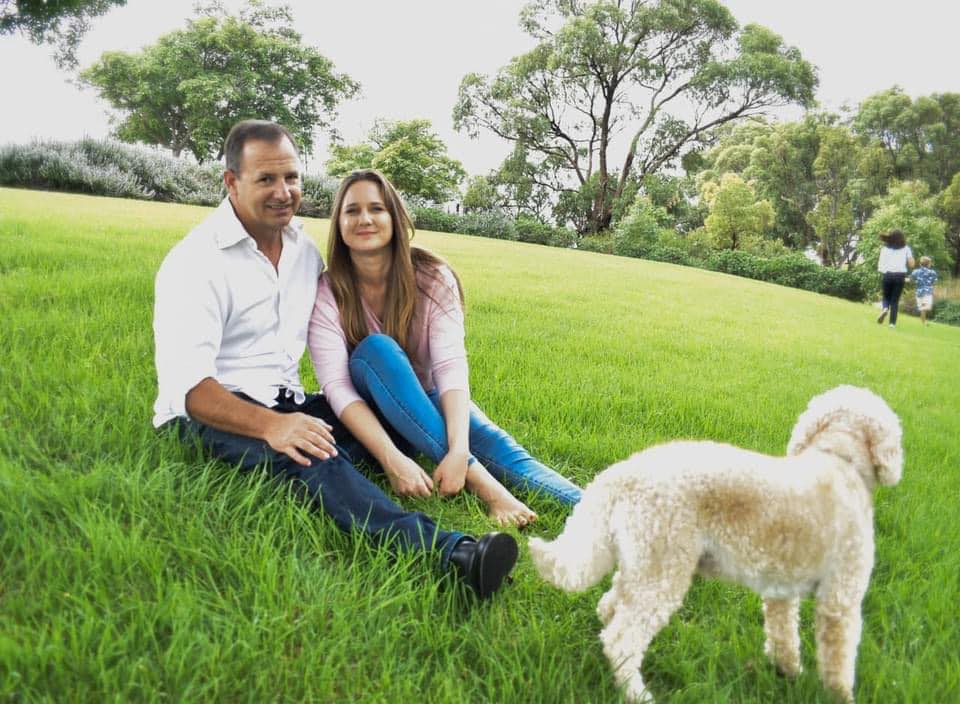
Getting a cancer diagnosis isn’t the end. For me, it was a brand-new beginning. It was an opportunity for me to renew myself or reinvent myself as a new person. It doesn’t have to be the end. It’s an amazing experience and continues to be to this day.
First Symptoms and Diagnosis
What was life like before your diagnosis?
Since my cancer diagnosis, I’ve changed a lot. Before cancer, I was a completely different person.
I was a mum of 2, both my kids were under 5, happily married. I was working as a mortgage broker in a family business. My father and I ran the business together. I thought my life was great, everything was going fine.
It isn’t until you get something like a cancer diagnosis that you realize, maybe life hasn’t been so great and I haven’t been so good to my body. Things are a lot different now and I’m happy to say, a lot better.
How would you summarize your journey with cancer?
That’s a really good question. I think it would mainly focus around – getting a cancer diagnosis isn’t the end. For me, it was a brand-new beginning. It was an opportunity for me to renew myself or reinvent myself as a new person. It doesn’t have to be the end. It’s an amazing experience and continues to be to this day.
What were your first symptoms?
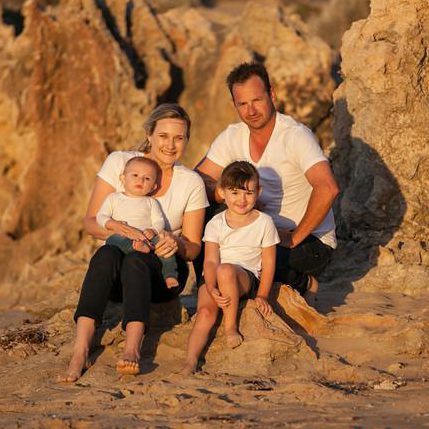
It was 2013. I had my son in April of 2013 and I was a young mum. Run off my feet, working full time. I was experiencing a lot of fatigue, which I thought was completely normal for somebody in my position. That was all I can remember experiencing before I noticed about 30 lumps all over my neck. It was like a corncob.
I was sitting in my office one day and a colleague of mine mentioned that she often feels her neck for lumps, which is really good advice. As you do, I felt my neck as well and thought, “There are lots of lumps on my neck. I wonder what that means.”
I wasn’t instantly concerned. I was 31 or 32 at the time. You feel invincible at that time, but I went to the doctor anyway and said, “I’ve got all these lumps on my neck.” He said, “We’ll take a blood test and I’ll let you know if anything comes about that.” I didn’t hear back from him so I thought it was fine.
I was experiencing a lot of fatigue, which I thought was completely normal for somebody in my position. That was all I can remember experiencing before I noticed about 30 lumps all over my neck. It was like a corncob.
»MORE: Read more patient experiences with first symptoms of lymphoma
Getting an ultrasound
About 6 weeks later, I went back to the doctor – the GP. I took my son in. It wasn’t even for me, but I did mention to him, “I’ve still got those lumps on my neck.” The look on his face was very concerned. “They shouldn’t be there after all this time. I’m going to send you to get a fine needle aspiration.” I said, “What is that?” He said, “You’re going to need a needle in your neck.” I was terrified of that.
I went in to get the test done. They said, “We don’t do it that way. We ultrasound the neck, then we’ll get you back in about 6 weeks and we’ll compare the ultrasound and do another ultrasound and compare.” I thought, great. I don’t want a needle in my neck, so I’ll go along with that.
Discovering more lumps
About 2 weeks later, I was at a friend’s house. Both of her parents are doctors. She called her parents in the room and said, “Nicky’s got these lumps on her neck.” At the time, I did mention I have a lump in my groin. They all just looked at me and said, “Go back to the doctor now.”
I went straight back to the GP and said, “I found another lump in my groin.” That’s not great. He said, “I’m going to send you straight to a hematologist.” The hematologist said he’ll see me in April. At this point, it was December. I went to my GP and said, “He can’t see me until April.” He called him and said, “We need to get Nicky in straight away.” So he saw me.
Were you concerned about what the diagnosis could be?
The GP did say to me it could be non-Hodgkin’s lymphoma. I said, “Is that better than Hodgkin’s lymphoma?” A lot of people ask that and I got it in my head that it’s probably the better one, but I don’t think it hit me.
I thought I had glandular fever. I wasn’t too worried at that point. Maybe it was my age. I was carefree, I guess. Even though the doctor said it could be non-Hodgkin’s, I didn’t consider that it would be, which is interesting to think about now.
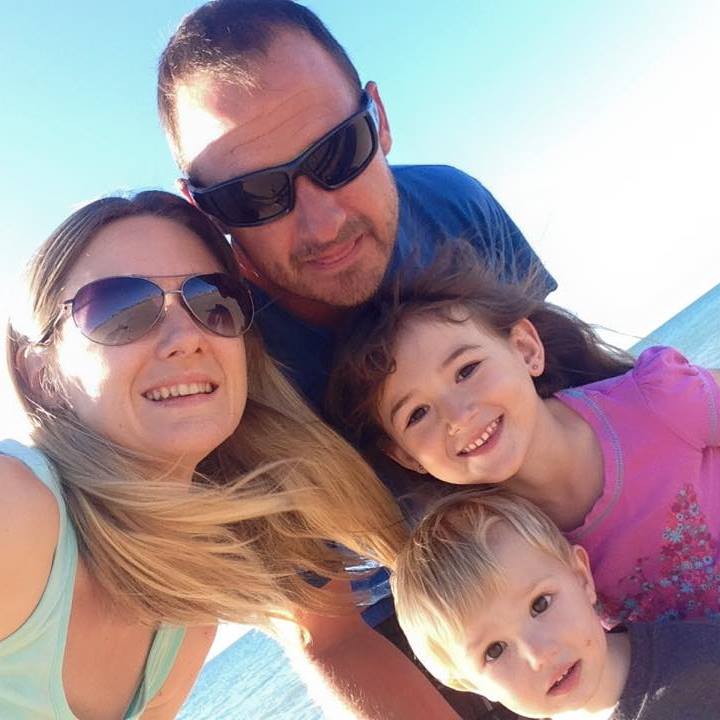
I thought I felt fine. I was experiencing fatigue that I have known to be [due to] low iron. I can’t remember at the time whether we checked my iron, but I thought it was normal being a mum of 2 little kids and working.
What does a fine needle aspiration feel like?
I was terrified. I’d like to say that was the worst part of it all, but it wasn’t. I lay there, my husband stood by me the whole time, and I was crying. I remember the nurse saying to me, “If you’re tense, it’s going to hurt.”
It was funny because when I was pregnant with my son, I practiced hypnobirthing where you learn how to put yourself in a hypnotic state to deal with pain. It didn’t work for the birth, but in that situation, my body automatically went into this hypnotic state.
I remember vaguely hearing them talking, but everyone was a bit far away. Then I heard the nurse say, “Is she awake?” From that point on, it was easier because I fully relaxed my body.
We got through that, then it was a waiting game. Again, I wasn’t that worried. I honestly thought I had glandular fever and I was going to have a bit of time off work, recover and go back to my life.
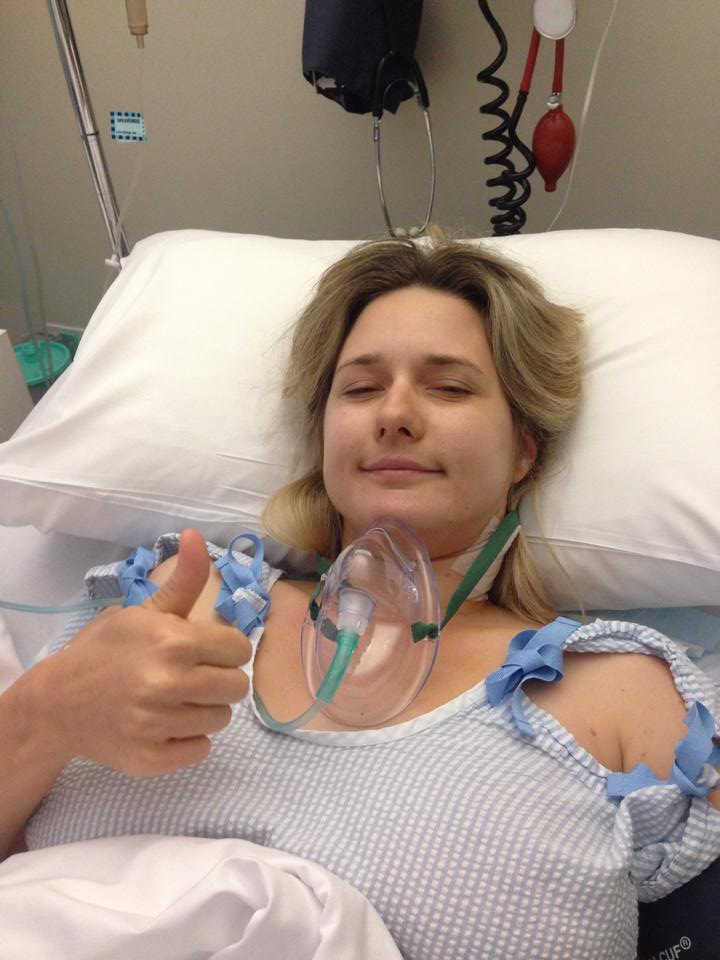
Delaying the diagnosis
I thought they had to do what the doctor said, and the doctor did originally say to do the fine needle aspiration. If they’d done that, I would have been diagnosed a lot earlier. Not that it made a huge difference, but it could have, so I was very surprised.
I’m a private patient, not a public patient so I thought I’d get straight in and get diagnosed quickly. Unfortunately, for a lot of people with follicular lymphoma, it does take a long time to diagnose. For me, it did take that time and waiting for the results of that biopsy.
I remember calling the hematologist 2 weeks later and saying, “Should we know by now?” I just wanted to know what was going on. I thought they would have called me if it was serious. You have that thinking. “If they call me straight away, then it must be serious. If they don’t, then it mustn’t be that bad.” Even then, I wasn’t thinking it was going to be any bad. But I wanted to know what was wrong with me.
Describe receiving your diagnosis
It was the 12th of February 2014. I remember everything about that moment. I got a phone call and my husband was sitting on the bed. I walked into the bathroom and had the phone to my ear. He said to me, “We’ve got the results and it’s a lymphatic disorder.” I said to him, “Is that cancer?”
I don’t know what made me say that because to me, lymphatic disorders are some kind of disorder we can sort out and I’ll be okay. But the words just tumbled out of my mouth.
He said yes. It was like a punch in the face. That’s how it felt. I stopped breathing. He said to me, “I want you to Google the word ‘indolent.’” I said to my husband, “Google the word ‘indolent.’” He said, “I’ll get you in to see me and we’ll do some more tests.” We hung up.
The reason it was a phone call and I didn’t go in is because I live an hour south of Perth. I live in a place called Mandra so it was easier for him to call me, which I didn’t mind.
Processing A Cancer Diagnosis
How did you and your husband react to the diagnosis?
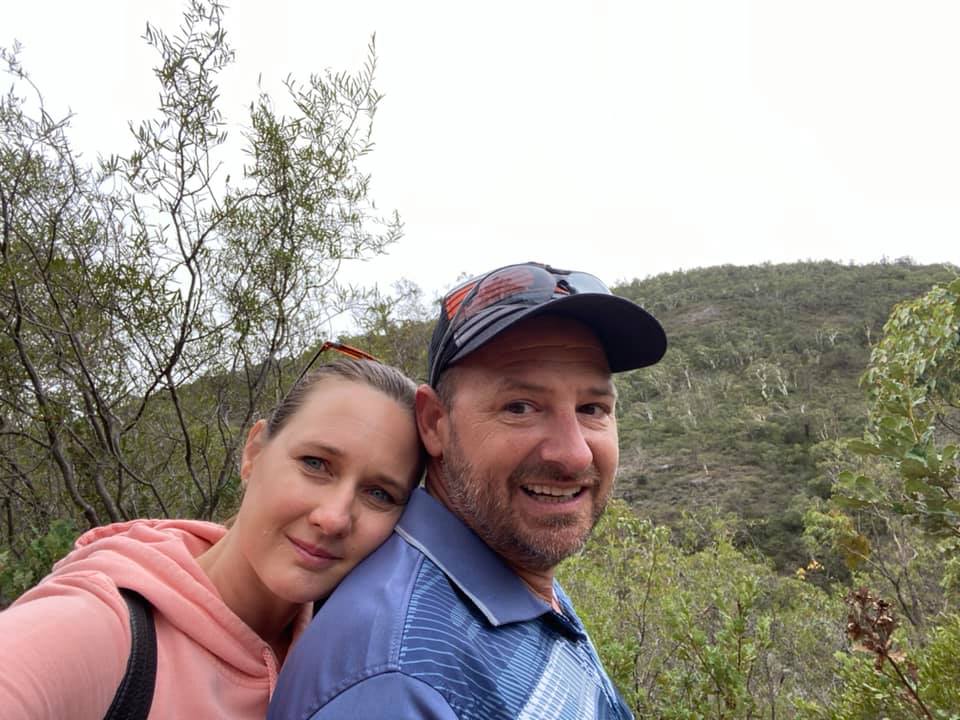
When you hear that word, everything runs through your mind at once. You don’t know anything at that stage.
My husband ran off and started Googling. I stood there stunned, trying to process the information. This isn’t glandular fever, this is cancer. When you hear that word, everything runs through your mind at once. You don’t know anything at that stage.
My husband came running back in and pulled my phone from me. He says “You’re banned from the Internet. You are not to Google anything.” Then he just lost it. He cried his eyes out for, I don’t know how long. I was supporting him and saying, “It’s okay. We’ll get through this.” He had his moment.
Instantly, his mum came down because she had breast cancer, so she’d been through that. We’re also very close. My mum was quite ill and I couldn’t even tell her. She has some mental health issues, so I heavily leaned on my mother-in-law. She came straight over and we sat down and spoke.
When my husband gathered himself and was able to be strong again, that’s when I lost it. We tag-teamed the support like, “Now I’m going to support you and surround you with love and whatever I need to do to get you through this.”
»MORE: 3 Things To Remember If Your Spouse/Partner Is Diagnosed With Cancer
Processing the follicular lymphoma diagnosis
We processed the information until my appointment with the hematologist. Over 3 days, I was stunned but I wanted to make sure he was okay. He’d read something and he still hasn’t told me what he read.
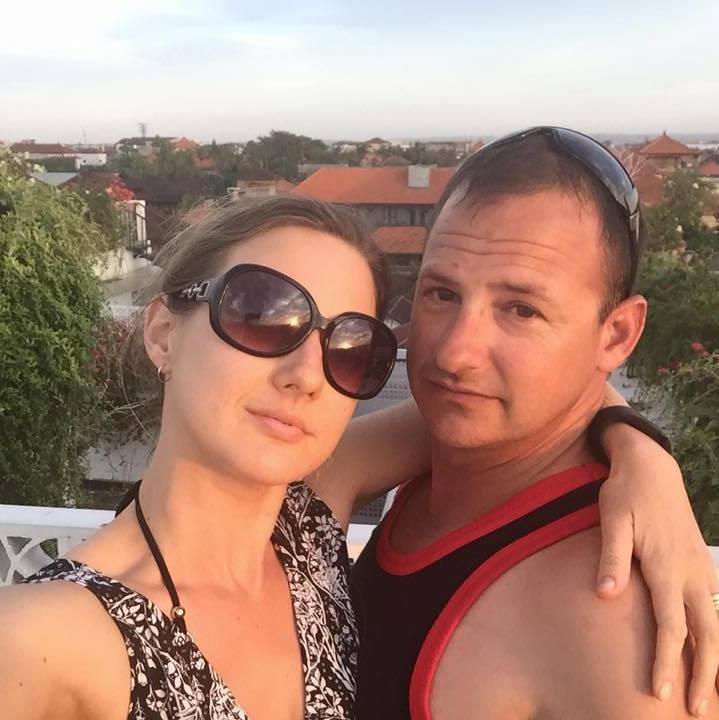
Doctors don’t usually tell you to go to Google so we were quite confused as to why he told us to Google that. But I do get what he meant. Indolent means slow-growing cancer, and I think that’s what he wanted to get across. My husband went too far and read something that scared him. I think that’s why he had his moment.
I didn’t Google. I didn’t want to know anything at that time. I was trying to process the information, trying to work out what I was in for. You think chemo, hair loss, all of that. You also think, am I going to be around for my kids? Am I going to meet my grandchildren and how long have I got? All those things run through your mind. It’s devastating, but also completely changes your outlook on life.
Someone said to me, “People who have had a cancer diagnosis, there’s something different about them. I don’t know whether it’s peace, but they look at life differently.” I was experiencing that. I was going through those emotions of, I’m not so untouchable anymore.
It’s a really hard thing to go through, but I think it was a very awakening moment for me. I look back on it now and realize that it was something that I needed to experience.
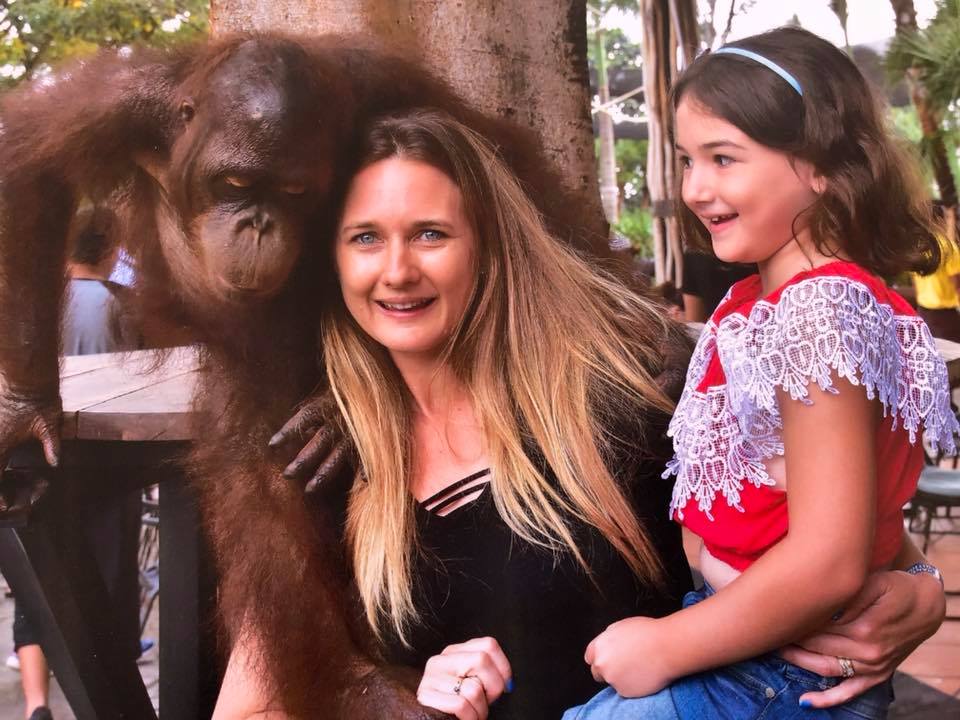
Before, I was so happy to be normal and have no medical issues. All of a sudden, that completely changed. It’s a really hard thing to go through, but I think it was a very awakening moment for me. I look back on it now and realize that it was something that I needed to experience.
What was it like to have your mother-in-law by your side?
It meant everything and it still does mean everything to have her as a person to always touch base with. My husband and I have been together since I was 15 years old. That’s almost 27 years this year, so she’s been a second mum to me and she’s been there when my mum hasn’t been there for me. I don’t know how to thank her for that.
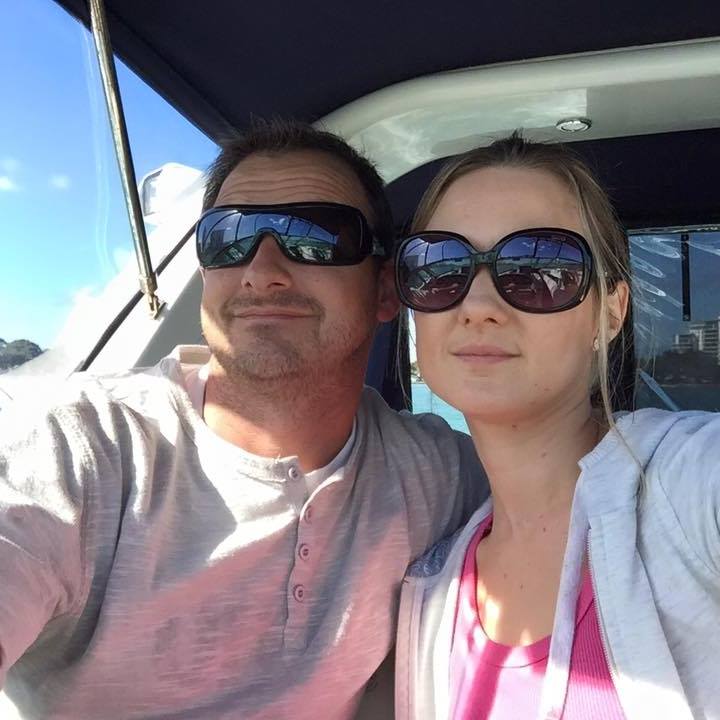
She’s been an amazing support system and we continue to support each other in our journeys. She’s going through treatment again so I try to be there as much as I can for her. We’ve been a sounding board for each other and it’s been invaluable for me.
I was going through the conversations she and I had and I realized even more how much she was there for me in all aspects of my life, not just the cancer diagnosis. It’s important to have someone who understands, who’s had a cancer diagnosis, and can see it from where you’re standing.
How long did it take you to process your diagnosis?
I think it took me years to digest because you go through stages. It’s cancer, you don’t have much more information than that, then you start going through the testing stage. I had an MRI, CT, and PET scan.
Getting Treatment
Describe your bone marrow extraction
After that, I had a bone marrow extraction. My hematologist offered to do that in his office and I’m so glad I didn’t. I said, “I’m going to go into hospital and get the good drugs so it’s less painful” because I had heard that it could be painful.
When I asked the hematologist what the procedure involves, he showed me the instrument. It was like a screwdriver or those things that open a wine bottle. He said, “I’m going to drill that into your hip and we’ll take a sample of your bone marrow. I can do that right here, right now.”
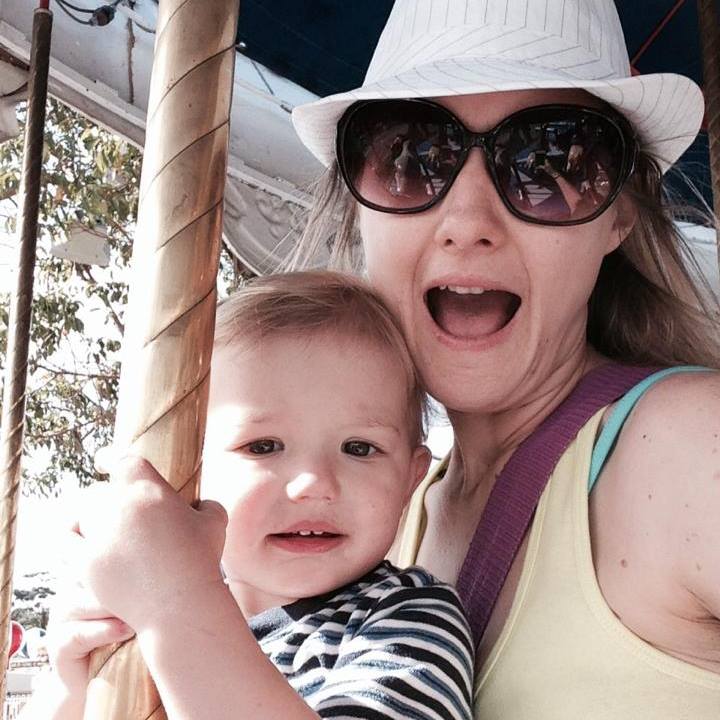
One symptom that I forgot to mention before, I’d lost quite a bit of weight. I was breastfeeding my son and you can expect to lose a bit of weight when you’re breastfeeding. I was quite skinny – in the low 50 kilos. For me, that’s quite light. I imagined myself being thrown around the room, and when I did go into the hospital to have the procedure done, that is what it felt like.
When I got into the hospital, it was an evening and I was expecting to go home that night because I had to get my kids to school the next day and my husband had to work.
They said to me, “You have a choice of two drugs. You can have the milder drug, but you can go home tonight or you can have this drug. It’s stronger and you won’t even feel a thing, but you have to stay overnight in the hospital.” I said, “I can’t stay overnight because I’ve got to get my kids to school in the morning, but I want that stronger drug. How do I get that?”
They called the hematologist and I said to him, “Please, I want the strong one. I think I need it.” He said okay, but they said to my husband, “Make sure you guide her to the car because she’s going to be very woozy afterward.”
When I said it felt like I was thrown around the room, I was floating around the room. I felt the pressure, but I didn’t feel any pain. It ended up being funny. My husband thought it was great to watch. We even got a photo of the bone marrow and a photo of us. So my experience wasn’t as bad as what some people have experienced because I advocated for myself and said, this is the way I want to do it and they agreed.
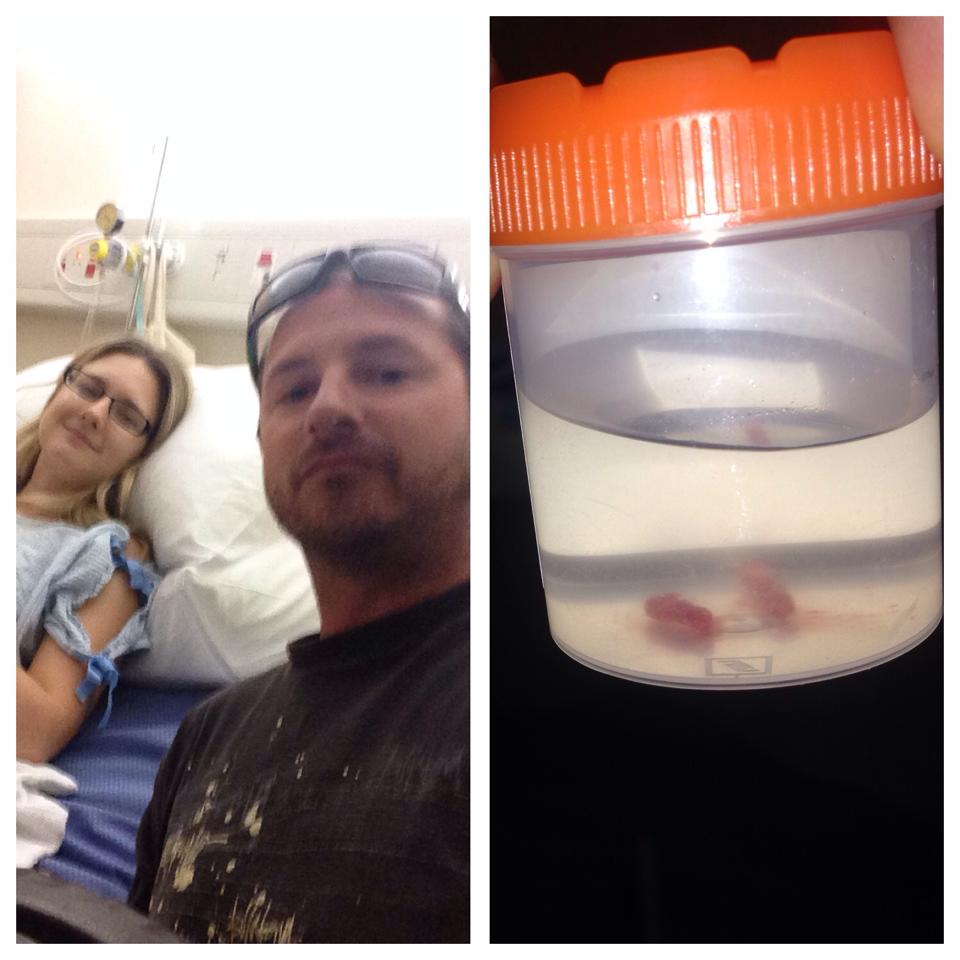
Beginning treatment
I had the results from the bone marrow, and they did find some juvenile cells which determined that I was stage 4. We then had a conversation about treatment options, but the one that they recommended the most was a clinical trial that they were just coming to the end of after about 10 years called Hot MabThera.
It was the monoclonal antibody rituximab coupled with radioactive iodine-131. I would have quarterly infusions of rituximab for a year, then not long after my first infusion, I would be injected with radioactive iodine and go under house arrest for 10 days.
Taking precautions after radioactive iodine infusion
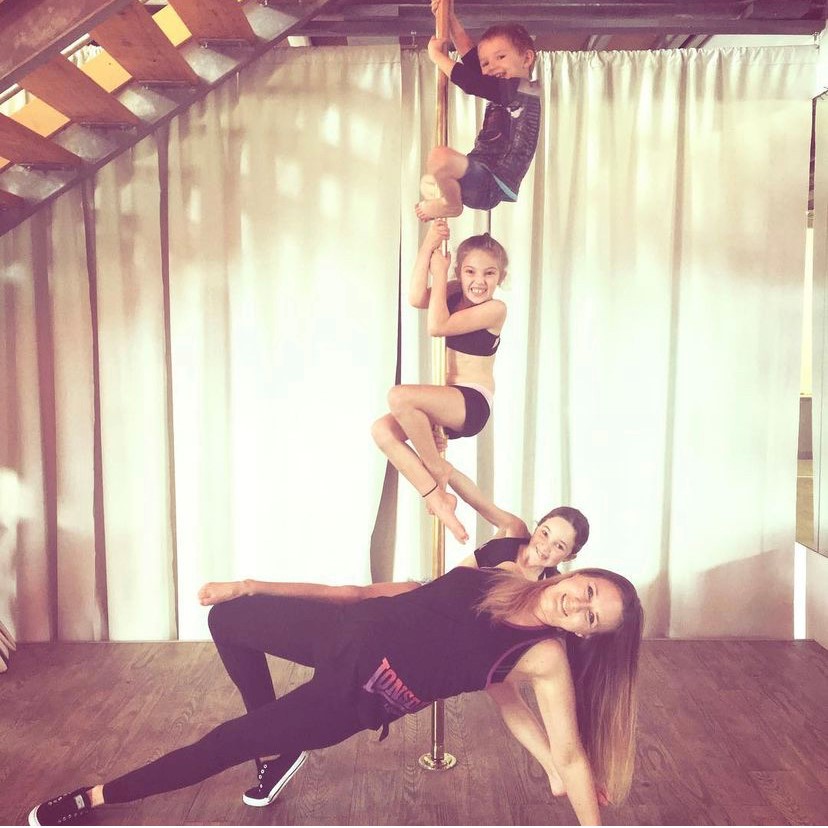
I would have to be away from my family. They had to approve where I was going to be staying, so I stayed with my auntie and uncle. My auntie is another one of my second mothers. She looked after me throughout that process. She took me to get that infusion, then drove me home after.
They put me in this chair, left the room, and gave me the infusion. They said I couldn’t be near anybody and to be within 5 meters of everybody. We took the stairs down out of the hospital and I was trying to be as far away from everyone as I could.
I sat in the very back corner of the car. We had to have a physician come over and check the place out. They gave my auntie, my uncle, and even the dog a badge to wear to measure the amount of radiation that they were absorbing.
I had to have my own bathroom facilities and my own room, as far away from them as possible. When I went to the toilet, I had to flush twice at least, and I had to be very careful what I did.
Radioactive iodine is known to destroy the thyroid. They did say, “You will likely have thyroid issues for the rest of your life, but we will give you a tincture that will help to protect it.” During the infusion, I had to drink it every day for about two weeks.
I had a scan on the day of the infusion, then I had to go back. It was day 8. I went back for another scan and you could see in the scan where [the tincture] had protected my side. I did forget to take that tincture 1 of the days, and I was worried that I’d ruined my thyroid, but I haven’t had any thyroid issues since the treatment.
How long were you away from your husband and kids after the infusion?
I did 2 weeks because I had 2 little kids. The instructions were to stay within 5 meters of most people but within 100 meters of children and pregnant women, because their cells are very fast-growing. Radioactive iodine destroys fast-growing cells. I said, let’s make it 2 weeks because I didn’t want to risk any chances of that.
Describe your radioactive iodine infusion
Something that still weighs on my mind, is when they were injecting me, the physician said, “This could cause a secondary cancer but probably not for another 20 years.”
The radioactive iodine infusion was just once and that was very quick. A machine gave me the infusion. A human couldn’t do it because they were so close to it.
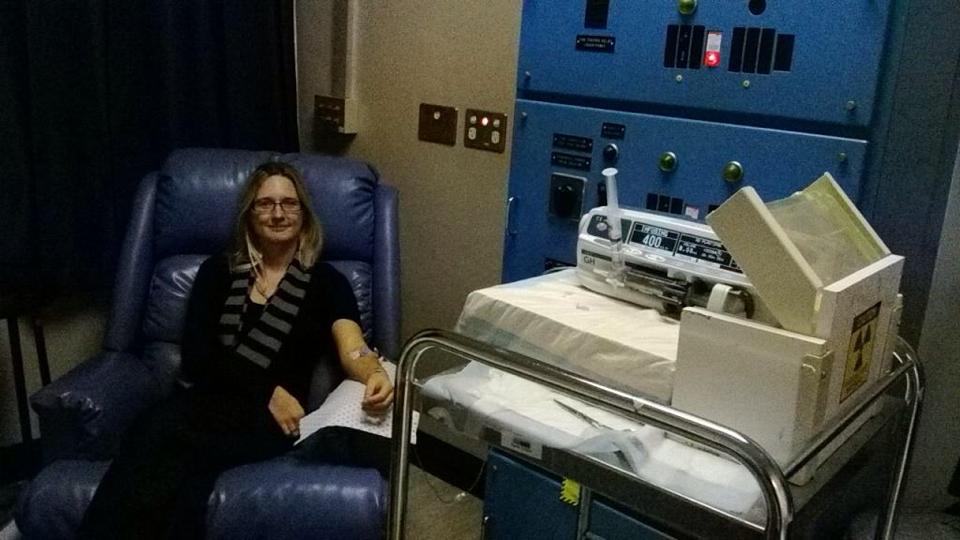
Something that still weighs on my mind, is when they were injecting me, the physician said, “This could cause a secondary cancer but probably not for another 20 years.” I’ll never forget that he said that. I thought, “You didn’t tell me that before.” I’m sure it was in the paperwork but there were mountains of paperwork that I had to sign for this trial. That does weigh on me so I do try very hard to look after myself.
They said usually they would give patients with this type of cancer R-CHOP. This was almost 10 years ago. There weren’t as many types of treatment as there are now. Although he did say to me, “There are new treatments emerging, so you may not need to have chemo.” I didn’t want to have chemo if I could avoid it, so I was happy to go along with that option.
Breastfeeding before starting treatment
They said they wanted me to start treatment within a month. I was breastfeeding my son and wanted to breastfeed him as long as I could. I enjoy breastfeeding. It was a beautiful experience for me and my baby and that was one of the hardest things for me to give up.
I remember saying every day that this is going to be the last time, then I’m going to stop. I ended up breastfeeding him up until the day that I left. Turns out, it was a lot harder for me than it was for him. He was completely fine.
Processing an inaccurate prognosis
I’ve learned no one can tell you how long you’re going to live. They can give you statistics.
You do ask, what’s the prognosis for this type of cancer? He said to me, “10 years with treatment.” I remember thinking that’s better than 6 months. Immediately I was grateful for 10 years. Then I got home and thought about it.
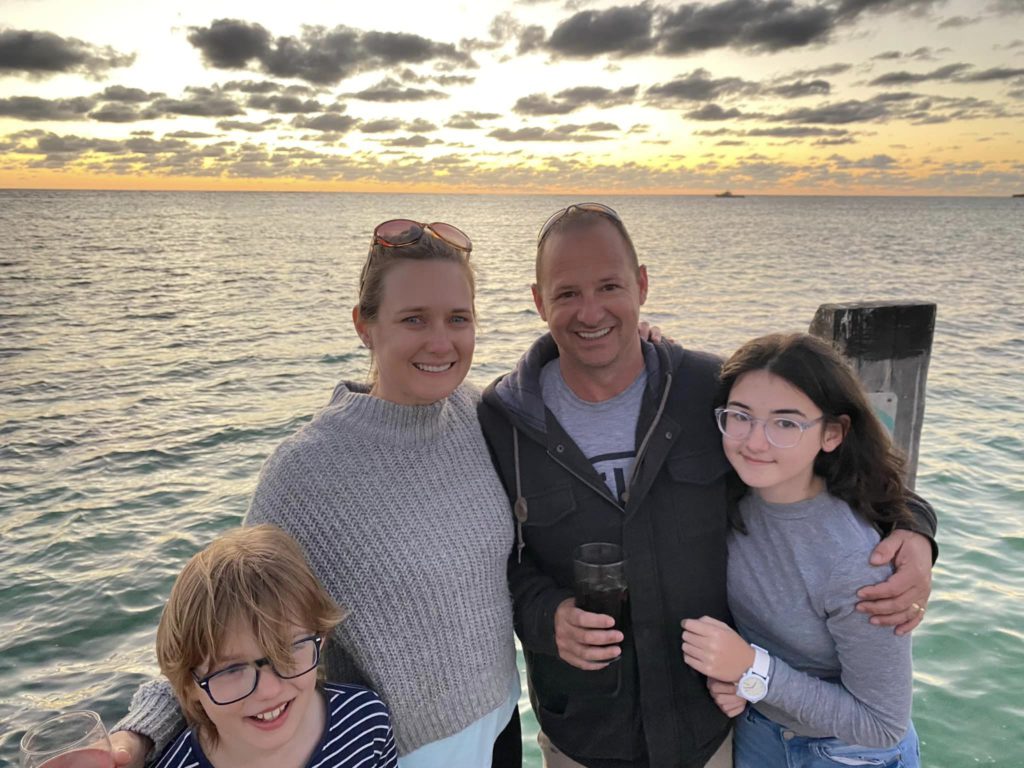
I was counting how old my kids are going to be at that age. I thought I can’t do 10 years. I need to meet my grandkids. I need to grow up with my kids. That stuck with me. My son was 1 and my daughter was 4. I’m thinking if I have 10 years with my son, he’s only going to be 11.
You take on board what the doctors say. I’ve learned no one can tell you how long you’re going to live. They can give you statistics. This type of lymphoma, they call the “old man’s disease” because they find a lot of older people get this. It was quite rare for me to get it at my age, so those statistics are based on older people who have this condition and how long they have lived. It’s not whether they died of the lymphoma or not, it’s how long they lived.
After a long time thinking about it, I put it down to that. He was giving me those stats and they weren’t accurate for someone like me. They were accurate for someone in their 80s diagnosed with this.
That probably took me 3 or 4 years to wrap my head around, to let that go finally because I held on to that for a long time and was terrified. I remember waking up in the middle of the night so many times, having that feeling of terror and crying. Thank God my husband was there because he would hold me and he remembers those moments. It’s a horrifying feeling.
Was treatment working for you?
I had one more scan that year to see if the treatment was working, but we could tell it was working because the lumps on my neck were disappearing.
It was my second infusion. I had the first one in May, so it must have been August when I had that. I had the PET scan in the morning and went to have my treatment. By the time I finished my treatment, they came back and said it was working. It was NED – there was no evidence of disease – but I was to finish my course of rituximab as maintenance.
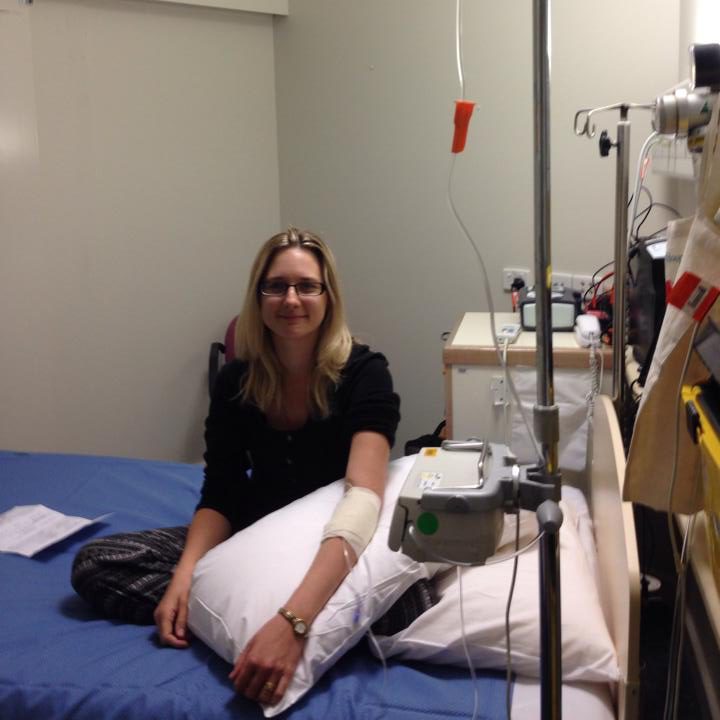
Navigating Life with Cancer
Complications with low platelet count
I did go through some hard times. Because it was a medical trial, I had to give weekly blood tests and I didn’t get to see those results. I didn’t know that was purely for the clinical trial.
I got to know the phlebotomist ladies quite well. They were lovely and I’d see them every week. I went back one week and said, “Look at my arm.” My arm was very bruised down to my hands. It was like I was bleeding under my skin. I said, “Look what you did to me last time. It really hurts.” She said, “That’s not normal. You shouldn’t be doing that.”
They were able to get my results and my platelets were dangerously low. My hematologist went on holiday for a couple of months, so I had no contact with a hematologist. I remember calling his receptionist and saying, “I’ve got really low platelets. What do I do?” She didn’t know. She didn’t even have anyone to refer me to.
The only person I could go to was the scientist running the trial. He’s not a people doctor, he’s a scientist. But he was really lovely. He was at a different hospital than my hematologist. I went in there and said, “I need some help. I don’t know what to do. I have really low platelets.”
I sat in the hospital for 2 days and I wasn’t admitted. They took blood [tests], came back, and said, “Your platelets are low but we’ll check them again tomorrow. If they’re still low, we’ll give you an infusion.” My dad sat with me for 2 days. It was really sweet of him to do that.
Switching to a supportive doctor
I did need to get that infusion and I did have to get another hematologist. I didn’t feel supported by that particular hematologist because he went on holiday and didn’t provide anyone to look after me. It was the doctor on the trial that said, “Go and find a good hematologist – a young hematologist – because this is something you’re going to be living with for the rest of your life.”
I said, okay, who are the best hematologists in Perth? I found out who the best one was, and that was Dr. David Joske. I was lucky enough for him to take me on and he was involved in the clinical trial. He said the platelet thing was not something that other patients experienced. We still don’t know why I experienced that. It was very scary at the time because they had to get the local hematologist on call in case I had an accident or hit my head.
It was the doctor on the trial that said, “Go and find a good hematologist – a young hematologist – because this is something you’re going to be living with for the rest of your life.”
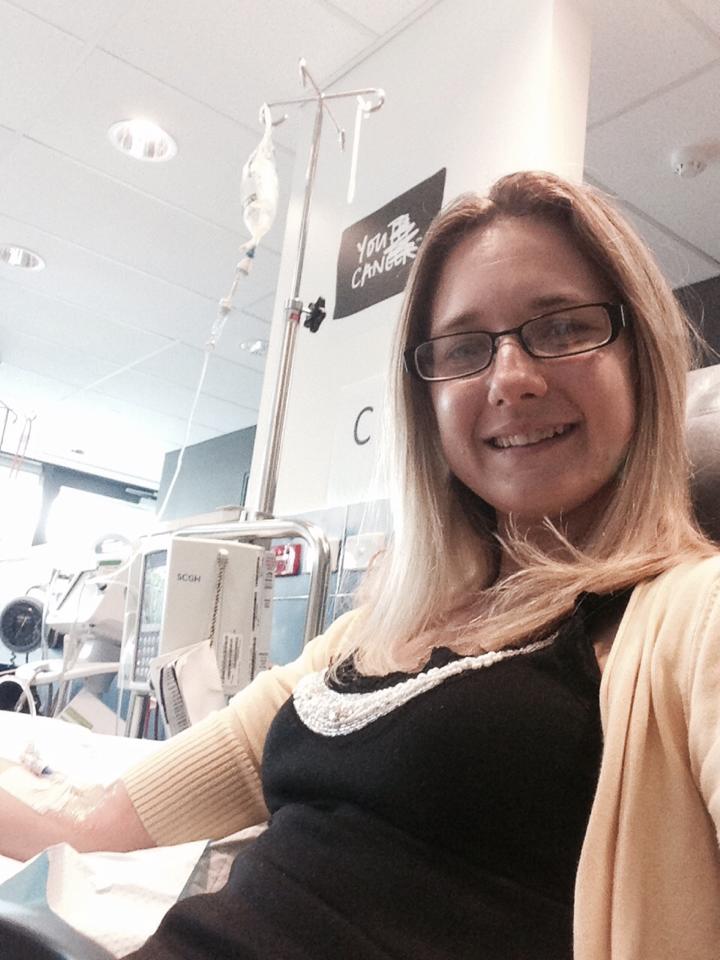
Choosing to monitor cancer rather than scan and test
I did have that one scan in August which confirmed that the treatment was working, but I haven’t had a scan since that day. My new hematologist said, “You’ve been subjected to a lot of radiation and we don’t want to subject your body to any more radiation, so we will not be scanning you regularly.” I was very happy about that. He said the way [the cancer] presented itself initially was through the lumps on my neck and in my groin, we usually expect it to present itself again in the same way. So that’s how we monitor it – we feel for lumps.
I have had lumps come and go – that’s called waxing and waning – so we monitor them. I have a couple of small ones in my neck. I’ve been so lucky because my doctor said, “Expect this to come back in about 3 to 5 years.” That’s the average time the stats say it’s likely to come back. [It’s been] 8 years now and it hasn’t come back.
It’s there. I can feel those lumps and that’s how I monitor it. I also look out for other symptoms or signs like weight loss. That’s a big one. If I lose more than 5% of my body weight without trying, that’s a red flag. I thankfully haven’t had that yet. I do get night sweats now and then, but we’re monitoring it.
I’m just grateful not to have scans. I have had a couple of ultrasounds in my stomach area if I’ve wanted to check or I’ve felt something, but that’s all come up clear. I do get scanxiety, but I also feel very grateful that I haven’t had to experience all those regular scans.
Pros and cons of watching and waiting
I know a lot of people who have been watching and waiting for 10 years and have never had treatment so far. That’s a good thing to consider when you get first diagnosed. If you do get the option of watching and waiting, take it.
I was so grateful that I didn’t go to watch and wait at the time. I got to start treatment and I was in warrior mode. My mental health during treatment was so much better than my mental health after treatment, but now that I know what I know, I wish I got to watch and wait.
People call it “watch and worry” and you do. But you’ve got the time to research the different treatments that are available to you. You can really have those choices. You can also look at your lifestyle and what things you can do. Diet, make sure you’re getting enough sleep, getting enough exercise and those things do help.
I know a lot of people who have been watching and waiting for 10 years and have never had treatment so far. That’s a good thing to consider when you get first diagnosed. If you do get the option of watching and waiting, take it. I know it sounds daunting because if you’ve got cancer inside you, you want to do everything you can to get rid of it. But the watch and wait pathway is a really good option if you do have that option.
What’s been the hardest part of your cancer journey?
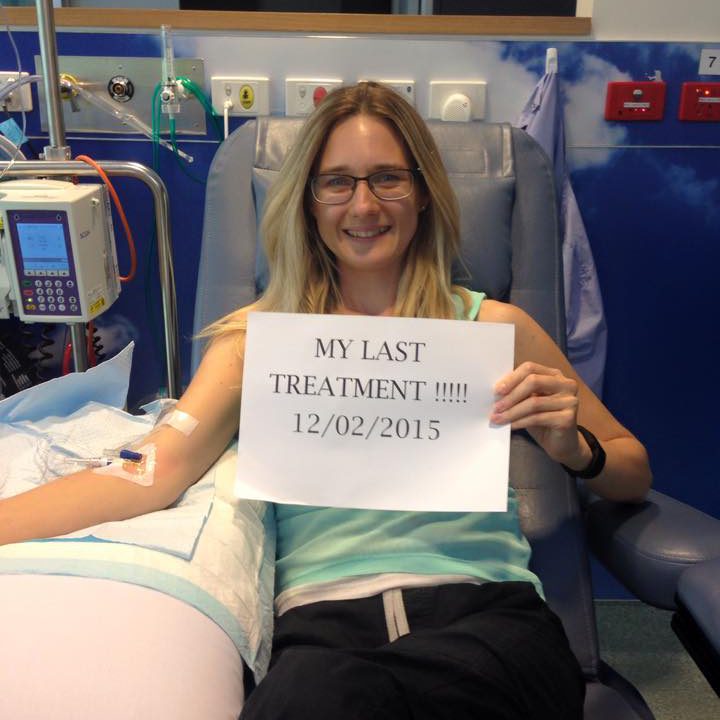
I say the hardest part of the whole thing looking back was when I finished treatment. Everyone celebrates when you finish treatment, but the idea of it coming back, that’s what you immediately start thinking about. I remember them saying to me “If this comes back in the first 2 years, your prognosis is worse.” I was thinking, “Oh, God. I can’t get this back in 2 years.”
I was very on edge for the first 2 years. Those first 12 months after treatment were the worst part for me. My mental health deteriorated rapidly. The anxiety that I experienced was numbing. I was teary every single day and I was still in mum mode, trying to get my daughter to school, looking after my 2-year-old son and I was working. I didn’t stop working but I was also very lucky to work from home and have the flexibility as a mortgage broker.
I remember that time being very negative and sad. I did a lot of Googling. I wanted to save myself. I wanted to cure myself. I researched everything that you could think of on the Internet. I went down so many rabbit holes, but I also got very confused because I didn’t understand how the human body worked. I would hear that this supplement was going to help, but I didn’t understand why.
I remember going to a supermarket one day. You read about all the chemicals in food and the preservatives. I walked into the supermarket and said, I’m going to get all the foods that I can eat. I came out of that supermarket in tears with an organic banana in my hand, thinking, this is the only thing I can eat. I remember feeling devastated and my weight dropped.
Rebuilding muscle through exercise
I ended up being about 48 kilos and very skinny. I was not a very nice skinny – I felt like I was going to break. I had no muscle at all. My doctor said to go build some muscle back. That did help me with my mental health. I didn’t go to the gym because that sounded rather boring.
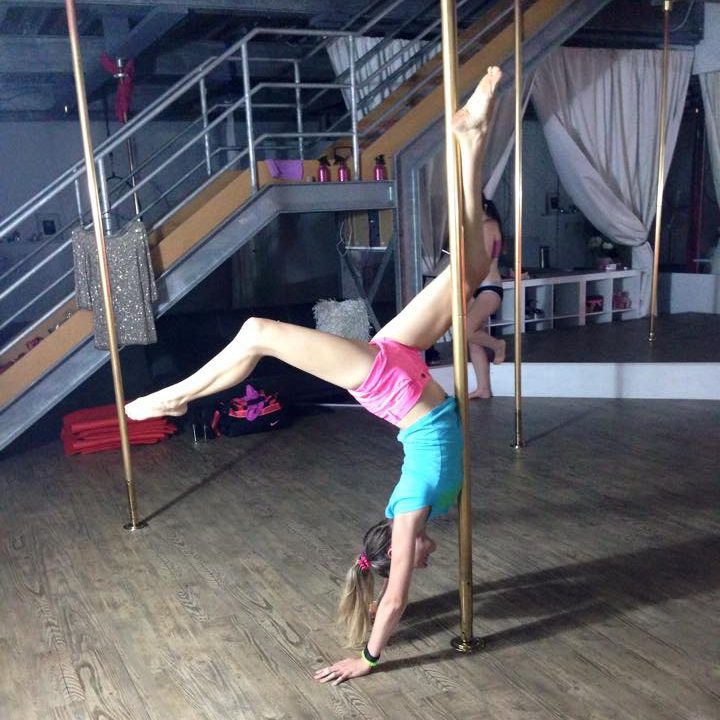
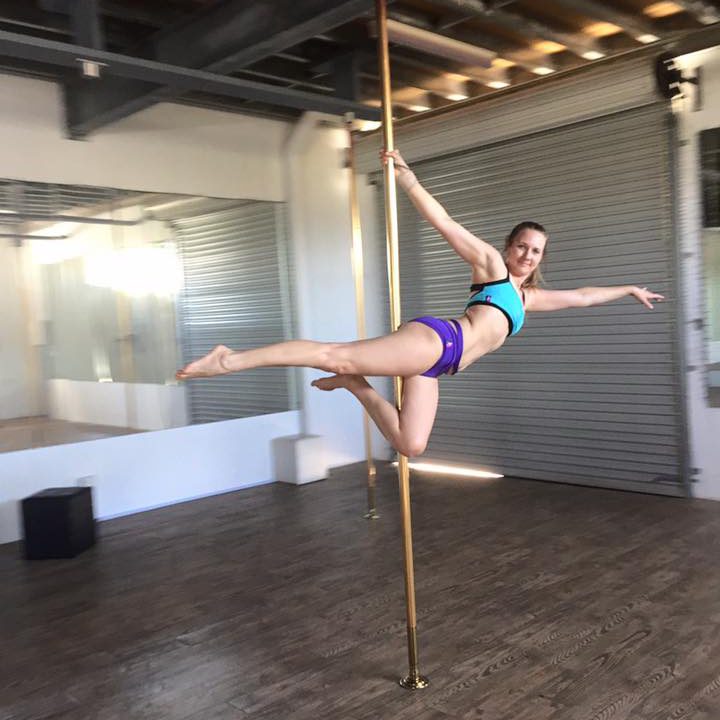
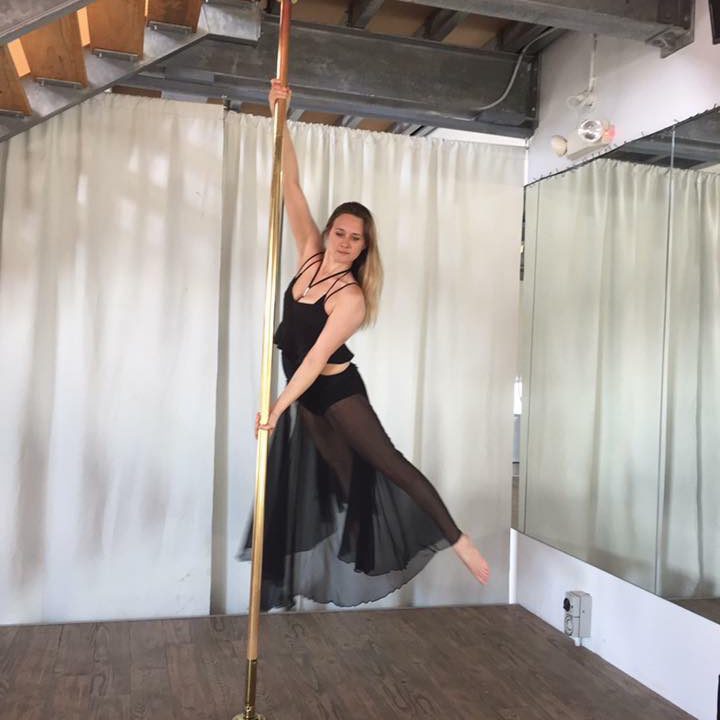
When I was a child, I did classical ballet and I loved that. I found a pole dance studio opening up down the road from me. I said I’m going. That ended up being a huge passion for me because I got to dance and I had a pole for stability and the strength moves involved in pole dancing allowed me to become fit. But that was gradually over a few years. I ended up becoming one of their instructors.
Reflections
Connecting with others living with follicular lymphoma
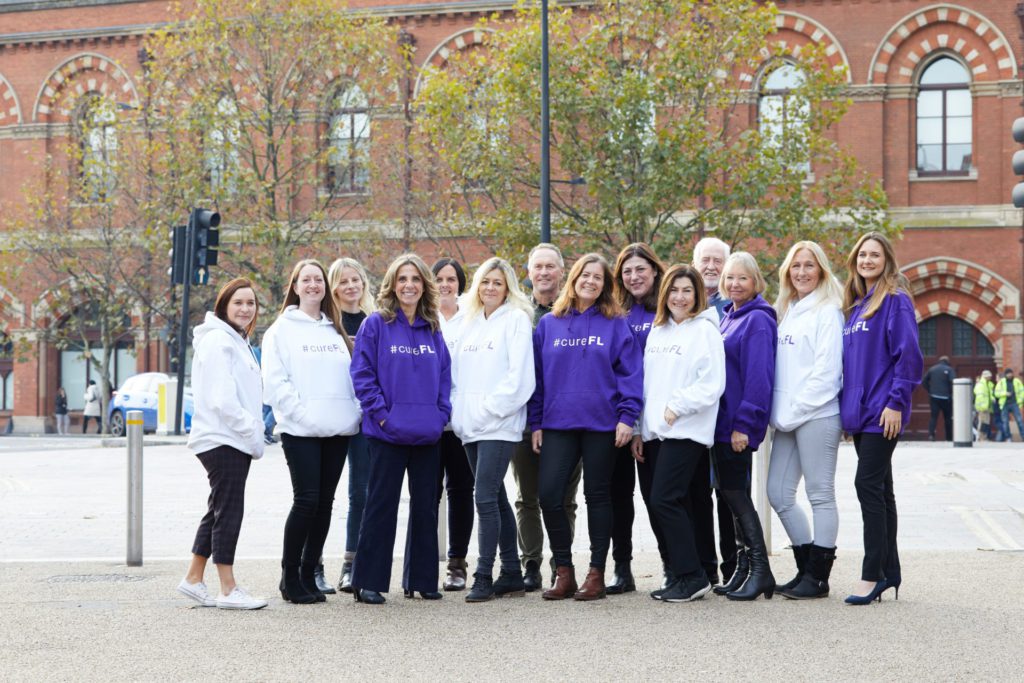
During those 12 months, that helped me mental-health-wise but I still struggled because I couldn’t find anyone to relate with. I’d met other people with non-Hodgkins lymphoma through the Leukemia & Lymphoma Society – the 2 charities that we have for lymphoma in Australia – and they were fantastic.
They put me in touch with other people, but we couldn’t find anyone with follicular lymphoma. I don’t know where they all were at the time, but I needed that connection with somebody. The main difference between non-Hodgkin’s (the most common is diffuse large B-cell) and follicular lymphoma is that the diffuse large B-cell is very aggressive, but it’s also curable. Whereas follicular lymphoma is not as aggressive but isn’t curable. I remember thinking, I don’t know which one I would prefer over the 2.
I needed to find someone to relate to. It wasn’t until 12 months after I finished treatment, my husband and I went on a search for someone else with follicular lymphoma. As much as I had the most wonderful support group around me of family and friends, I still felt completely and utterly alone because no one could understand exactly what I was experiencing.
I cannot explain the instant relief that I felt speaking to these people. I wish that I had that at the beginning of my journey and I want everybody to have access to that as soon as they’re diagnosed. Come to our community, see and speak to these people.
We went on Facebook and asked, “Are there other people with follicular lymphoma?” We found a couple but didn’t quite make connections. I thought, there isn’t a Facebook group dedicated to follicular lymphoma patients, so I’ll set one up. Because we’re living with this incurable cancer for the rest of our lives, I’m going to call it “Living With Follicular Lymphoma.” It was in November 2015 that I started the group on Facebook and instantly, people started coming in. Even a couple of people from Perth came in within the first few days.
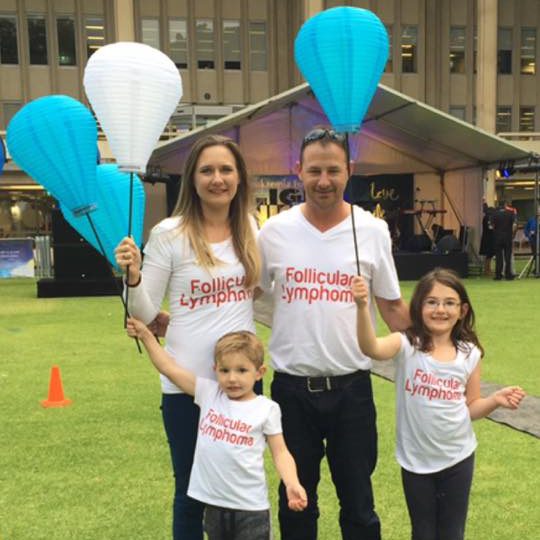
That was the first time I was able to meet people face-to-face and I’m still very good friends with them to this day. They’ve been amazing support for me and we support each other.
People started coming in from all over the world. Within months, we had over 500 members. I cannot explain the instant relief that I felt speaking to these people. I wish that I had that at the beginning of my journey and I want everybody to have access to that as soon as they’re diagnosed. Come to our community, see, and speak to these people. You meet people who have been living with this for decades.
There are hard times that some of these people experienced, but we support each other. There are different treatments all over the world, so you’re likely to find someone who has had the same treatment as you. That was one thing that helped me.
When did you realize you needed more support?
The moment that I realized I needed this support was when I was crying every single day. I didn’t realize how much it was affecting my kids. My daughter pulled me out to finally go and get some help. She was writing letters to Santa and she wrote in her letter, “Dear Santa, I’ve been really good helping my little brother with my mum. But my Christmas wish is that I want my mum to be happy every day.”
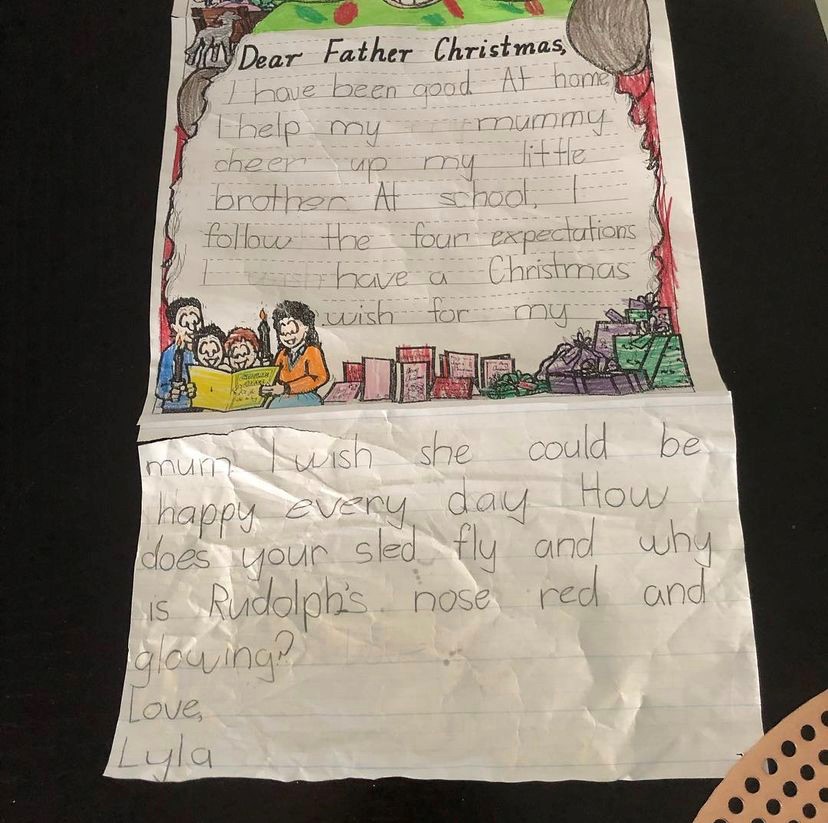
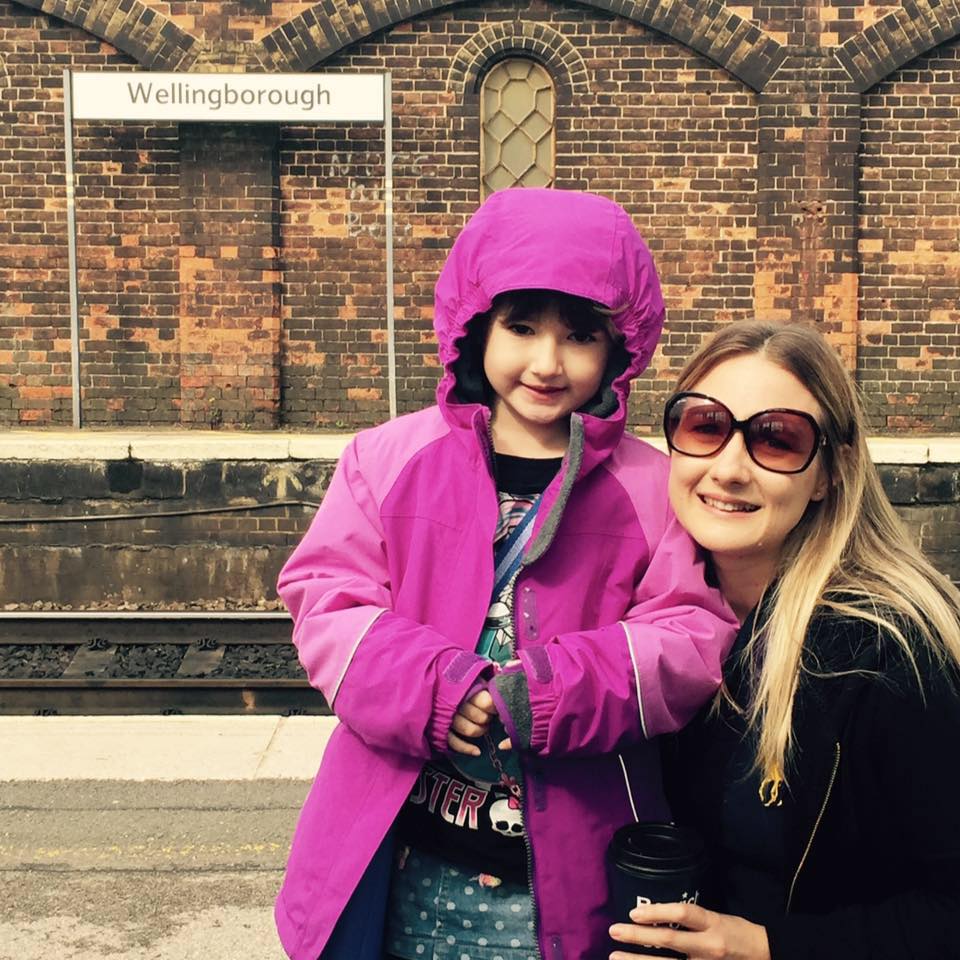
It still gets me. I remember pulling it out of [her] bag and thinking, she’s noticing this. This is affecting her. I need to do something about this now. That’s when I went to my husband and had a talk. We said we need to find others with this condition. That’s what started me on that journey of connecting with other follicular lymphoma patients, and it was such a huge relief when I finally did.
My mental health is just as important as my physical health. As much as I was focusing on eating the right foods, exercising, and doing all those things right, I wasn’t looking after my mental health. I was letting myself get deeper into that hole of depression.
Kids are everything to you. The moment that I realized it was affecting [my daughter] was a reminder that I’m living for her. I want to live because I want to be with her, I want to watch her grow and I want to watch her fall in love, get married and have kids. I need to do everything I can to be there.
My mental health is just as important as my physical health. As much as I was focusing on eating the right foods, exercising, and doing all those things right, I wasn’t looking after my mental health. I was letting myself get deeper into that hole of depression.
It was at that moment I realized, I have to do this for my kids. Not just for them, but for me. I want to be there for them. I want to witness these things that they’re going to experience growing up and be there for those times, those hard times. I need to be strong enough to do that, to support them. I remember it being a huge, pivotal moment for me.
What do you wish you could tell yourself at the beginning of your journey with cancer?
One of my biggest goals is to connect as many patients as I can. I want to connect all of them, everyone in the world, because together we’re stronger and together we can amplify that patient voice and bring about new treatments.
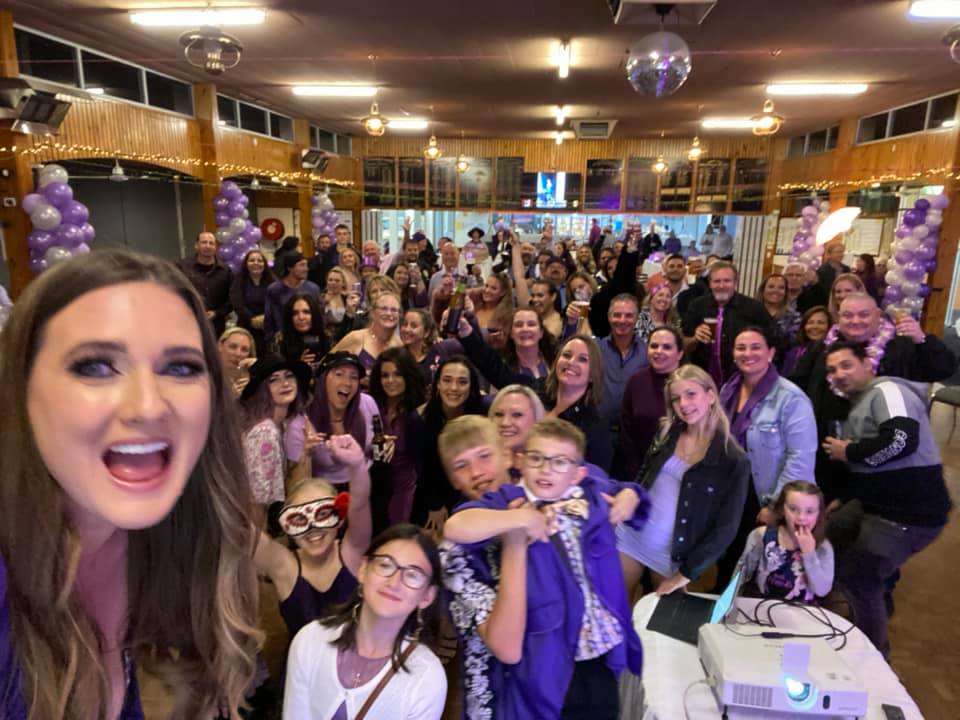
If I could go back and say something to myself, I would say, this isn’t the end. Things are going to get better and you need to push to get there, so don’t give up. Don’t ever give up.
Don’t consider this to be the end of your journey. This is just a new beginning, a new life. It’s not always going to be doom and gloom, it can be really positive. You can also give back when you’re ready and when you’re strong enough.
Also, find your people. Find the people that are dealing with this similar situation because it’s so powerful. Not only are you supporting each other, but you’re also supporting the patient voice. One of my biggest goals is to connect as many patients as I can. I want to connect all of them, everyone in the world, because together we’re stronger and together we can amplify that patient voice and bring about new treatments.
Sharing hope for those with follicular lymphoma
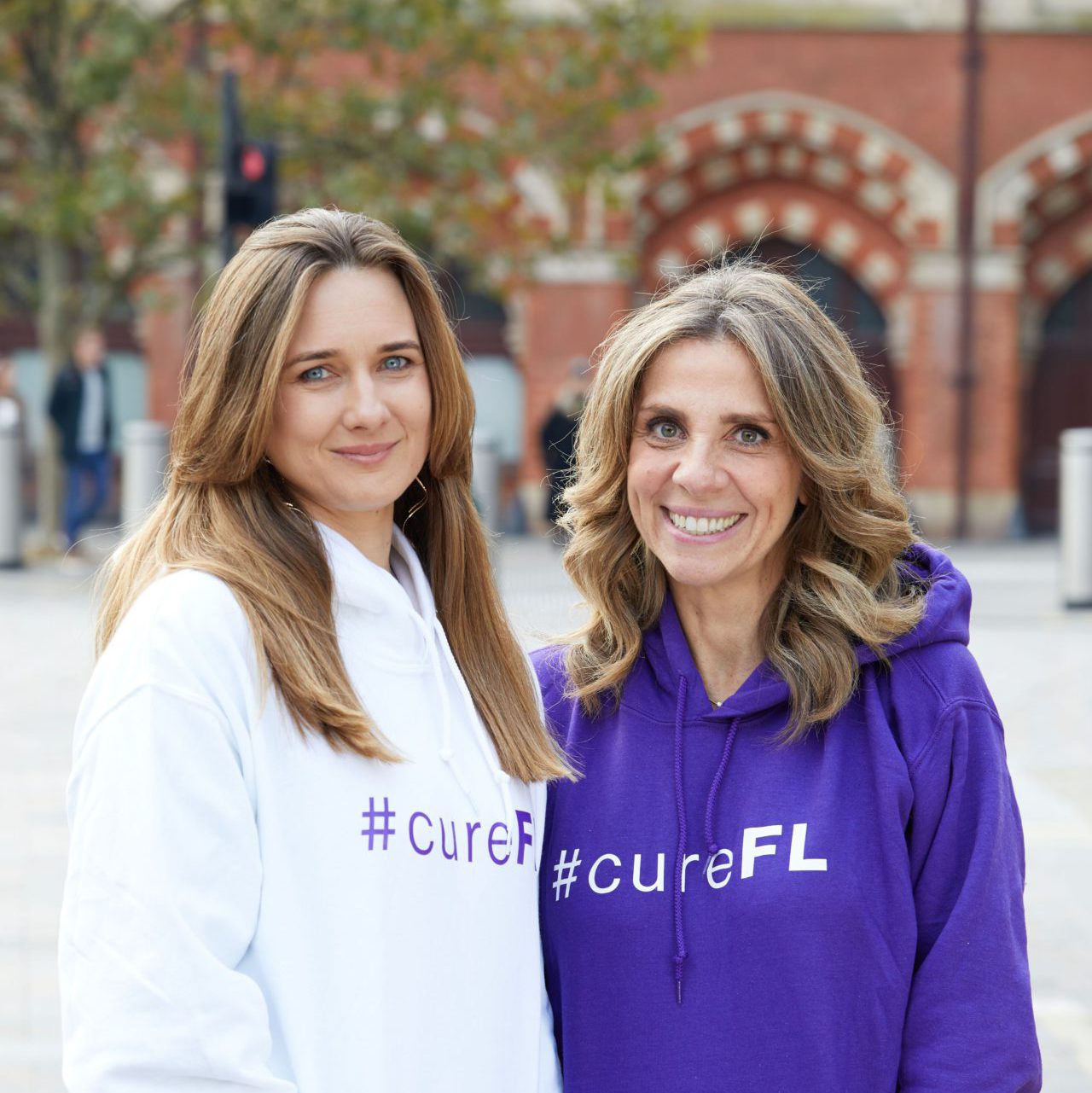
As patients, we want a cure. The only way to do that is if we all fight for it and get together. My co-admin, Nicola Mendelsohn, came about a year after I started the group and she also was diagnosed with follicular lymphoma. She set up the Follicular Lymphoma Foundation – the first charity that is solely for follicular lymphoma patients. It’s also working towards finding a cure.
I’m so grateful for that and I know all of us in our community are grateful for the Follicular Lymphoma Foundation because they’re there for us and they’re fighting for us.
I want to bring all of us together to work towards finding that cure because we will. It won’t just be one cure, it will be cures, and these cures may help other cancers, especially blood cancers. So find your people, get together, and make a difference.
Edited by: Bella Martinez
More Follicular Lymphoma Stories
Hayley H., Follicular Lymphoma, Stage 3B
Symptoms: Intermittent feeling of pressure above clavicle, appearance of lumps on the neck, mild wheeze when breathing and seated in a certain position
Treatments: Surgery, chemotherapy
Laurie A., Follicular Lymphoma, Stage 4 (Metastatic)
Symptoms: Frequent sinus infections, dry right eye, fatigue, lump in abdomen
Treatments: Chemotherapy, targeted therapy, radioimmunotherapy
Courtney L., Follicular Lymphoma, Stage 3B
Symptoms: Intermittent back pain, sinus issues, hearing loss, swollen lymph node in neck, difficulty breathing
Treatment: Chemotherapy
John S., Follicular Lymphoma, Stage 4 (Metastatic)
Symptom: Swollen lymph nodes
Treatments: Clinical trial, chemotherapy
